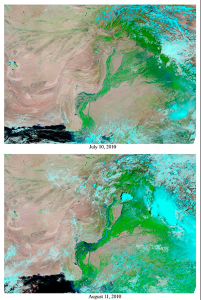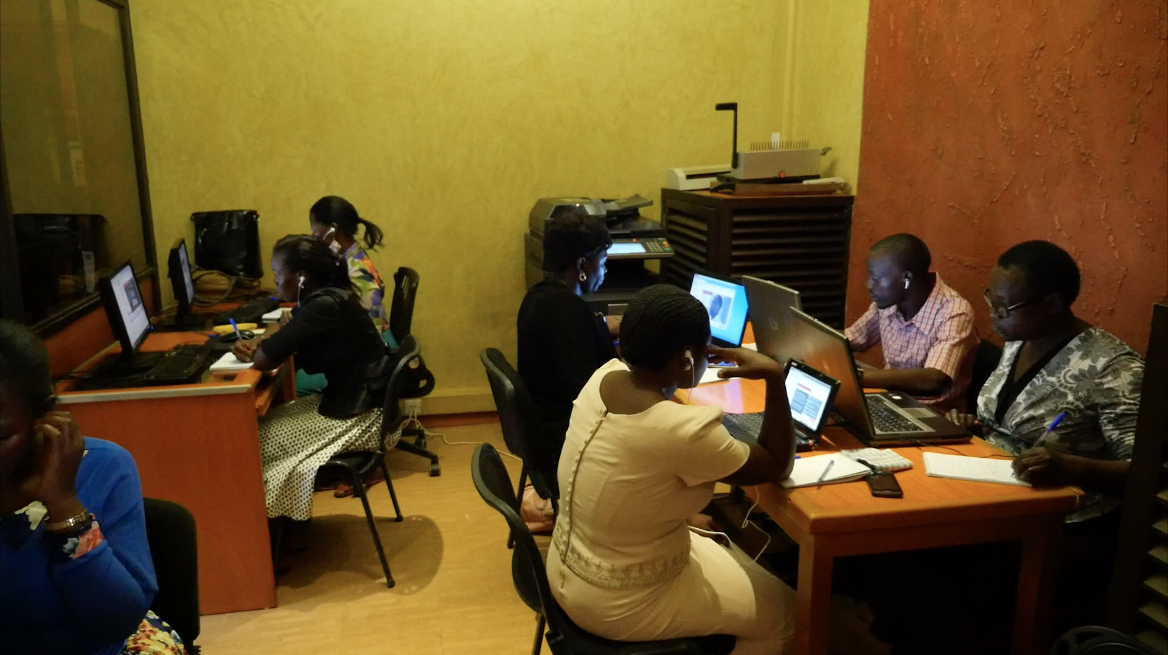Before getting too carried away with Facbeook’s Places app, look into how smartphones are locating and coordinate relief efforts in Pakistan’s natural disaster, via crowdsourcing.
On August 18th 2010, Facebook enabled the Places app, introducing a 3D human element to the traditional status update, allowing you to “immediately tell people about that favorite spot.” Places is similar to FourSquare, a smartphone app that lists thousands of places for you to check in at, based on your GPS location. According to Michael Sharon, product manager for Places: “the next time you head off on vacation or go to a show, check in with Places to find out which friends are there,” either via your iPhone or touch.facebook.com.
 According to Walt Mossberg, the man behind the Wall Street Journal’s weekly Personal Technology column, “companies began to build location-based social networks shortly after smartphones began to include social-networking apps and the ability to pinpoint your location.”
According to Walt Mossberg, the man behind the Wall Street Journal’s weekly Personal Technology column, “companies began to build location-based social networks shortly after smartphones began to include social-networking apps and the ability to pinpoint your location.”
Let’s take a look into how such networking apps are being used in Pakistan today.
Before getting too carried away with Facbeook’s Places app, look into how smartphones are locating and coordinate relief efforts in Pakistan’s natural disaster, via crowdsourcing.
On August 18th 2010, Facebook enabled the Places app, introducing a 3D human element to the traditional status update, allowing you to “immediately tell people about that favorite spot.” Places is similar to FourSquare, a smartphone app that lists thousands of places for you to check in at, based on your GPS location. According to Michael Sharon, product manager for Places: “the next time you head off on vacation or go to a show, check in with Places to find out which friends are there,” either via your iPhone or touch.facebook.com.
According to Walt Mossberg, the man behind the Wall Street Journal’s weekly Personal Technology column, “companies began to build location-based social networks shortly after smartphones began to include social-networking apps and the ability to pinpoint your location.”
Let’s take a look into how such networking apps are being used in Pakistan today:
Monsoon rains in Pakistan have resulted in the country seeing it’s worst flooding in 80 years; some are calling it the flood of the century. Some 20 million Pakistanis have been effected by the rains; 2 million people displaced and almost 1,500 dead. As Secretary of State, Hillary Clinton: “This flooding has already effected more people than the Indian Ocean tsunami, the Haiti earthquake and the 2005 Pakistan earthquake combined.”
So, how can social media help?
“Relying on patchy information to allocate limited resources creates distortions both in emergency relief and in long-term policy planning.” Thus, via Ushahidi’s crowdsourcing platform, technological entrepreneur and TED Fellow Faisal Chohan, built Pakistan Flood Incident Reporting. According to Chohan, because Pakistan has more than 90 million mobile phone users, “it has the potential to become the largest deployment of Ushahidi anywhere in the world.” This PakRelief CrowdMap locates everything from food to volunteers, security to food health.
According to Amnesty International, citizens and NGOs are “using virtual mapping to allow anyone who is helping to report incidents to see where help is needed.” “PakReport can ensure the efficient distribution of limited resources through incident reporting.” You can help by filling in the map’s blank areas with information, by sending an SMS message to 3441, making sure to add FL to the beginning of the message.
In addition—currently working in Karachi—filmmaker and TED Fellow Sharmeen Obaid-Chinoy “stays connected with other journalists in the field via Twitter and texts, and connects them with her international network to provide medical support and other aid.”
From “me” to “we”
Opposed to PakReport, Facebook’s Places is a “Me” crowdsourcing network. Anti-Facebook-er Carmen Joy King—referencing Jean Twenge’s studies of entitlement and self-absorption—calls Facebook a narcissistic obsession of “Generation Me.” According to the two, children of the 1980s and ‘90s self-reference themselves with “me” instead of “we.”
But PakReport is all about “we” and “us” and “together as a team.” For up-to-date information on PakReport, follow @PakReport on Twitter and visit pakreport.org/blog. Join the discussion, via #Pakistan, #PKflood, #PKrelief and #helppakistan. Use Google’s Resource Finder Map or “Like” Google Maps Pakistan on Facebook. Also on Facbeook, check out Pakistan Flood Relief Effort 2010.
A simple solution for “Me”-addicted Facebook crowdsourcers
So, still can’t tear yourself away from Facebook’s fun and socially up-to-date “Me” crowdsourcing, and unsure how you can locate yourself more purposefully? There is indeed a way to put yourself in the shoes of suffering Pakistanis. Check out BBC Dimensions, where just by typing in your home postcode, you can see how the measured area of land affected in Pakistan stands in comparison to your hometown.


